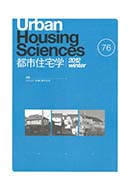Volume 2012, Issue 76
Displaying 1-19 of 19 articles from this issue
- |<
- <
- 1
- >
- >|
-
2012Volume 2012Issue 76 Pages 4-10
Published: 2012
Released on J-STAGE: June 29, 2017
Download PDF (601K) -
2012Volume 2012Issue 76 Pages 11-15
Published: 2012
Released on J-STAGE: June 29, 2017
Download PDF (542K) -
2012Volume 2012Issue 76 Pages 16-22
Published: 2012
Released on J-STAGE: June 29, 2017
Download PDF (850K) -
2012Volume 2012Issue 76 Pages 23-29
Published: 2012
Released on J-STAGE: June 29, 2017
Download PDF (673K) -
2012Volume 2012Issue 76 Pages 30-36
Published: 2012
Released on J-STAGE: June 29, 2017
Download PDF (1407K) -
2012Volume 2012Issue 76 Pages 37-42
Published: 2012
Released on J-STAGE: June 29, 2017
Download PDF (1012K) -
2012Volume 2012Issue 76 Pages 43-46
Published: 2012
Released on J-STAGE: June 29, 2017
Download PDF (666K) -
2012Volume 2012Issue 76 Pages 47-52
Published: 2012
Released on J-STAGE: June 29, 2017
Download PDF (667K) -
2012Volume 2012Issue 76 Pages 53-59
Published: 2012
Released on J-STAGE: June 29, 2017
Download PDF (1698K) -
2012Volume 2012Issue 76 Pages 60-64
Published: 2012
Released on J-STAGE: June 29, 2017
Download PDF (794K) -
2012Volume 2012Issue 76 Pages 65-68
Published: 2012
Released on J-STAGE: June 29, 2017
Download PDF (1254K) -
2012Volume 2012Issue 76 Pages 69-70
Published: 2012
Released on J-STAGE: June 29, 2017
Download PDF (408K) -
2012Volume 2012Issue 76 Pages 71-77
Published: 2012
Released on J-STAGE: June 29, 2017
Download PDF (1128K) -
2012Volume 2012Issue 76 Pages 78-84
Published: 2012
Released on J-STAGE: June 29, 2017
Download PDF (1027K) -
2012Volume 2012Issue 76 Pages 92-
Published: 2012
Released on J-STAGE: June 29, 2017
Download PDF (440K) -
2012Volume 2012Issue 76 Pages 93-
Published: 2012
Released on J-STAGE: June 29, 2017
Download PDF (323K) -
2012Volume 2012Issue 76 Pages 94-103
Published: 2012
Released on J-STAGE: June 29, 2017
Download PDF (19187K) -
2012Volume 2012Issue 76 Pages 104-111
Published: 2012
Released on J-STAGE: June 29, 2017
Download PDF (482K) -
2012Volume 2012Issue 76 Pages 112-121
Published: 2012
Released on J-STAGE: June 29, 2017
Download PDF (1062K)
- |<
- <
- 1
- >
- >|
